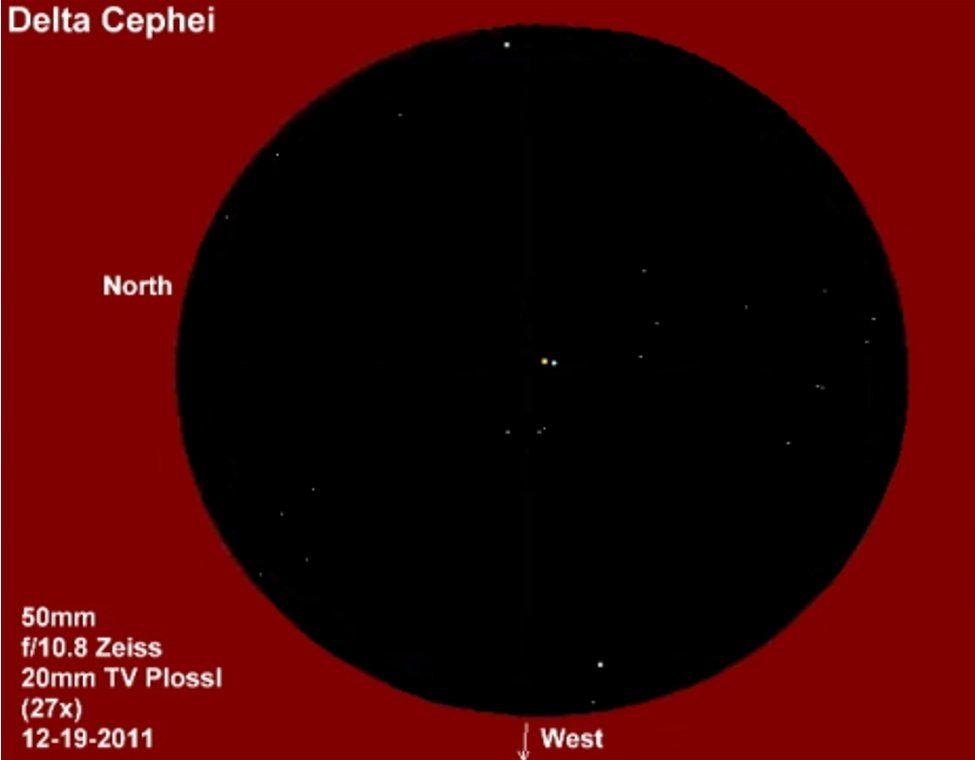Delta Cephei
AKA: Alfirk or STFA 58. Position: 22 hr 29.2 min +58deg 25 min.Due south on 21.54 (BST) on 15 October 2019
Picture Credit: John Nanson, Star-Splitters (https://bestdoubles.wordpress.com)
To find this star, look for Deneb which is almost overhead around 10 pm. Then locate Caph (the highest of the stars in the W of Cassiopeia at the moment). Almost half-way between Deneb and Caph is a fairly bright star Zeta Cephei (mag. 3.4). This is the bottom star in a small right-angle triangle. The star nearest Caph and Cassiopeia is Delta Cephei. The Primary is 4.2 and the secondary (C) 6.1 with a separation of 40.6″ which is very wide and easily seen in a small telescope at around 60x magnification. The primary has been seen as orange or deep yellow (it is a G2 star, the same as our Sun) and the secondary as blue or deep blue (it is B8 which should be blue-white rather than blue). Webb compares it with Albireo. It is better known as a variable star with a marked variation (3.5 to 4.4) over a short period (5.37 days). It will be at its maximum at 22.19 on 23 October 2019. It is the archetype of an important class of variable stars called Cepheids, whose period is proportional to their absolute magnitude. As the relationship between magnitude and distance is easily calculated, measuring the apparent magnitude of a Cepheid yields its distance. In this way, Edwin Hubble – on the basis of work by Henrietta Leavitt – was able to show in 1924 that Andromeda Nebula had to be outside the Milky Way thus enormously increasing the size of the known universe. The pulsation is a result of a very dynamic hydrostatic equilibrium, whereby the star heats up, expands and as a result of the expansion cools down again. Although the position angle and separation have hardly changed since they were first measured in 1800 it is a binary star.
